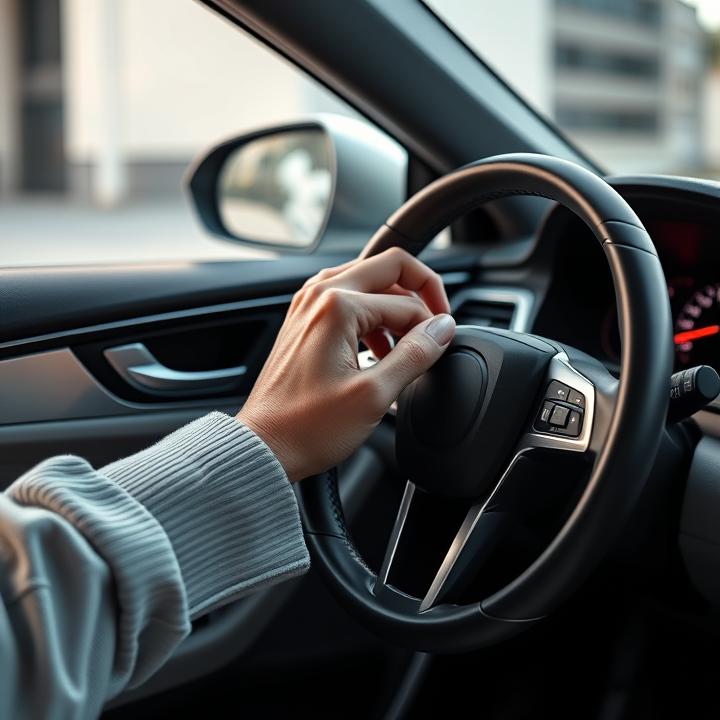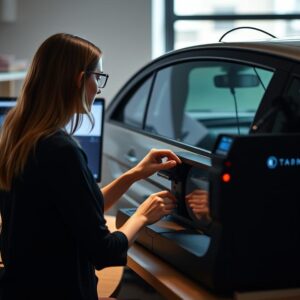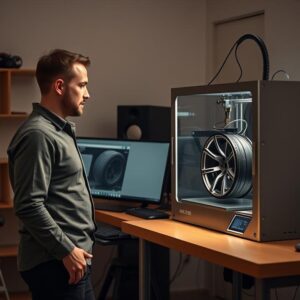The Impact of 3D Printing in Automotive Industry: Case Studies, Applications, and Future Trends

Explore the role of 3D printing in transforming the automotive industry by enhancing design, production, and repair processes. Learn through real-world case studies and discover future possibilities of 3D printing in car manufacturing.
3D Printing Revolutionizing the Automotive Industry
The automotive industry is undergoing a massive transformation with the adoption of 3D printing technologies. From accelerating the design process to enabling on-demand production of parts, 3D printing is reshaping the way vehicles are designed, manufactured, and repaired. With its ability to reduce material waste, optimize complex geometries, and provide rapid prototyping, 3D printing is proving to be a game-changer for car manufacturers, engineers, and designers.
In this article, we will explore the key applications of 3D printing in the automotive industry, showcasing how it is enhancing vehicle design, improving production efficiency, and enabling faster repairs. Through real-world case studies, we will examine how major automotive companies are leveraging 3D printing to revolutionize their operations.
Case Study 1: 3D Printing for Prototyping—The Case of BMW and the i8 Roadster
BMW, one of the leading automakers in the world, has embraced 3D printing to accelerate its prototyping and vehicle design processes. The company uses 3D printing for both interior and exterior parts, helping to quickly prototype and test designs before they go into mass production.
BMW i8 Roadster: The Role of 3D Printing in Vehicle Design
The BMW i8 Roadster is an example of how 3D printing can streamline the design and development of vehicles. BMW used 3D printing to prototype components such as the front and rear bumpers and interior parts like the dashboard. By leveraging 3D printing, BMW was able to rapidly test different designs and improve the functionality of these components without the need for traditional, time-consuming manufacturing processes.
Additionally, BMW’s 3D-printed prototypes allowed for the creation of parts that were lighter and stronger than traditional materials, improving the overall performance and efficiency of the i8 Roadster.
Benefits and Results
The use of 3D printing for prototyping offers several advantages to BMW and other car manufacturers:
- Faster Design Iteration: 3D printing allows for rapid prototyping, enabling quicker design iterations and testing.
- Cost-Effective Prototyping: Traditional prototyping can be expensive and time-consuming, but 3D printing allows manufacturers to produce prototypes at a fraction of the cost and time.
- Material Optimization: 3D printing enables the use of lightweight and durable materials, resulting in better performance and fuel efficiency.
BMW’s use of 3D printing to prototype key components is an excellent example of how this technology can enhance vehicle design and development.
Case Study 2: 3D Printing in Production—Ford’s Use of 3D Printing for Manufacturing Parts
Ford has been using 3D printing for several years to improve its manufacturing processes. The company focuses on producing both prototypes and functional production parts using additive manufacturing technologies. Ford has integrated 3D printing into its supply chain to create tools and components more quickly and efficiently, reducing costs and lead times.
Ford’s 3D-Printed Parts for Manufacturing Efficiency
In its advanced manufacturing facility, Ford has implemented 3D printing to produce parts for both prototype vehicles and the production line. A notable example is the 3D-printed tool used to create the cooling plates for the automaker’s vehicles. Traditional tools would take weeks to produce, but 3D printing allows Ford to produce these components in just a few days, significantly reducing production delays.
Ford also uses 3D printing to create customized parts and low-volume components, which is particularly useful when creating vehicles with unique specifications or modifications.
Benefits and Results
By incorporating 3D printing into its production processes, Ford has seen numerous benefits:
- Reduced Production Time: 3D printing accelerates the production of parts, reducing lead times and speeding up manufacturing.
- Cost Savings: By producing parts in-house using 3D printing, Ford reduces its dependency on external suppliers, cutting costs.
- Flexibility: 3D printing allows Ford to create customized parts quickly and efficiently, adapting to new vehicle designs or customer needs.
Ford’s success with 3D printing in production showcases how additive manufacturing can streamline automotive manufacturing while improving flexibility and efficiency.
Case Study 3: 3D Printing in Car Repairs—Volkswagen and the Use of 3D-Printed Parts for Aftermarket Services
Volkswagen is another automaker that has embraced 3D printing for car repairs and aftermarket services. The company has leveraged 3D printing to produce spare parts on demand, providing faster and more affordable solutions for vehicle repairs.
Volkswagen: Using 3D Printing to Produce Spare Parts
Volkswagen began using 3D printing to produce parts for its classic cars, particularly for models that are no longer in mass production. In collaboration with a 3D printing service provider, Volkswagen developed a method to produce rare and hard-to-find components using 3D printing, enabling owners of classic Volkswagen cars to maintain their vehicles more easily.
In addition to classic car parts, Volkswagen has also used 3D printing to manufacture replacement parts for newer models. This on-demand production system reduces the need for storing large inventories of spare parts, offering more efficient and cost-effective repairs.
Benefits and Results
Volkswagen’s approach to using 3D printing for car repairs offers several key benefits:
- Faster Repair Turnaround: By printing spare parts on demand, repair times are reduced, and customers can get their cars back on the road faster.
- Reduced Inventory Costs: The need to store large quantities of spare parts is minimized, reducing the costs associated with excess inventory.
- Sustainability: 3D printing allows for on-demand production, reducing waste associated with overproduction and shipping.
Volkswagen’s use of 3D printing for spare parts production is an excellent example of how the automotive industry can utilize this technology to improve the speed and cost-efficiency of vehicle repairs.
Case Study 4: 3D Printing in Performance Parts—Koenigsegg’s Use of 3D-Printed Turbocharger Parts
Koenigsegg, a Swedish manufacturer known for producing high-performance hypercars, is using 3D printing to create advanced performance parts for its vehicles. One of the most notable examples is the use of 3D-printed parts in the car’s turbocharger system.
Koenigsegg: 3D-Printed Turbochargers for Enhanced Performance
Koenigsegg has partnered with the company Stratasys to 3D print turbocharger parts made from metal alloys. These parts are specifically designed to withstand the extreme temperatures and pressures within the turbocharger system of Koenigsegg’s hypercars.
The 3D-printed turbocharger components provide superior strength and heat resistance compared to traditionally manufactured parts, allowing for more efficient performance. By using 3D printing, Koenigsegg can also create complex geometry that is impossible to achieve with conventional manufacturing methods.
Benefits and Results
The use of 3D printing in performance parts provides several advantages for Koenigsegg:
- Improved Performance: 3D-printed parts can withstand higher temperatures and stresses, resulting in improved vehicle performance.
- Weight Reduction: The precision of 3D printing allows for parts that are lighter without compromising strength, leading to better fuel efficiency and handling.
- Customization: 3D printing enables the creation of parts that are custom designed for specific vehicles, improving overall performance.
Koenigsegg’s innovative use of 3D printing in high-performance parts showcases the potential for this technology to enhance automotive engineering.
Case Study 5: 3D Printing for Customization—Lamborghini and the 3D-Printed Car Interior Components
Lamborghini, a luxury car manufacturer, has embraced 3D printing for custom vehicle interior components, allowing for a level of personalization that was previously unattainable.
Lamborghini: Personalizing Car Interiors with 3D Printing
Lamborghini uses 3D printing to produce customized interior components for its cars, such as dashboard panels, air vents, and control knobs. The company uses high-performance materials that are both lightweight and durable, ensuring that the components meet the rigorous standards of luxury automotive design.
By using 3D printing, Lamborghini can offer customers the opportunity to personalize their cars with bespoke interior components that are tailored to their individual preferences.
Benefits and Results
Lamborghini’s use of 3D printing for vehicle customization provides several key benefits:
- Enhanced Personalization: Customers can choose from a range of customized interior features, making each vehicle unique.
- Faster Production: 3D printing accelerates the production of custom parts, allowing Lamborghini to quickly meet customer demands.
- Material Efficiency: 3D printing allows Lamborghini to use materials that are both lightweight and durable, improving the performance of the vehicle.
This case demonstrates how 3D printing can enhance luxury car manufacturing by offering greater customization and improved production efficiency.
The Future of 3D Printing in the Automotive Industry
1. On-Demand Parts Manufacturing
The future of 3D printing in automotive manufacturing lies in the ability to produce on-demand spare parts. This approach will eliminate the need for large inventories and significantly reduce manufacturing and logistics costs.
2. Sustainability and Waste Reduction
3D printing has the potential to reduce material waste in automotive manufacturing. As the industry moves toward more sustainable production processes, 3D printing will play a crucial role in minimizing waste and optimizing resources.
3. Integration with Autonomous Vehicles
The development of autonomous vehicles presents new opportunities for 3D printing. As the design of self-driving cars evolves, 3D printing can enable the creation of customized parts that meet the specific needs of autonomous vehicles.
FAQ: 3D Printing in the Automotive Industry
Q1: What are the main uses of 3D printing in the automotive industry?
3D printing is used in automotive design, prototyping, manufacturing, performance parts production, and repair services.
Q2: Can 3D printing reduce the cost of car production?
A: Yes, 3D printing can reduce costs by accelerating prototyping, improving manufacturing efficiency, and allowing for customized production.
Q3: Is 3D printing used in producing entire car bodies?
While 3D printing is not yet used for full car bodies, it is increasingly used to produce smaller components, parts, and prototypes.
Q4: How does 3D printing improve the performance of cars?
A: 3D-printed parts are often lighter, stronger, and more heat-resistant than traditional parts, leading to improved performance and fuel efficiency.
Q5: Are 3D-printed parts durable?
A: Yes, 3D-printed parts are highly durable, especially when made from advanced materials like metal alloys or carbon fiber.
Q6: Can 3D printing be used for car repair?
A: Yes, 3D printing is used for on-demand spare parts production, making car repairs faster and more cost-effective.
Q7: How does 3D printing reduce waste in car manufacturing?
A: 3D printing uses only the material needed for production, reducing the waste associated with traditional manufacturing methods.
Q8: Can 3D printing be used to customize cars?
Yes, 3D printing allows for the customization of car parts, including interior components, performance parts, and exterior designs.
Q9: What are the future trends of 3D printing in the automotive industry?
A: Future trends include on-demand parts manufacturing, sustainable production, and integration with autonomous vehicle designs.
Q10: Which automakers are leading in 3D printing adoption?
A: Major automakers such as BMW, Ford, Volkswagen, Koenigsegg, and Lamborghini are at the forefront of adopting 3D printing technologies.
The Future of 3D Printing in Automotive Manufacturing
The automotive industry is witnessing a revolutionary shift with the integration of 3D printing technologies. From faster prototyping and customized parts to cost-effective production and repair solutions, 3D printing offers a wide range of benefits. As technology advances, the potential for 3D printing in automotive manufacturing will continue to expand, paving the way for a more efficient, sustainable, and innovative future in the industry.





